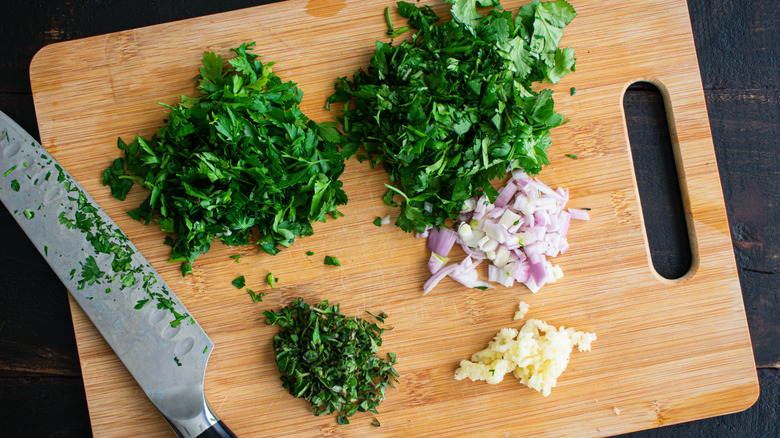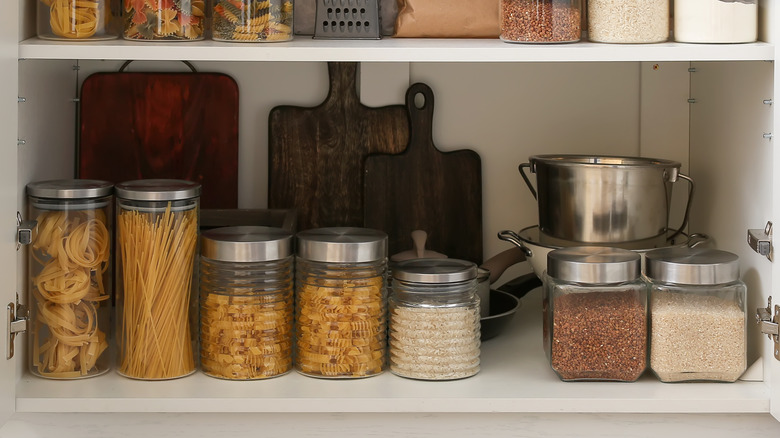The Best Place To Store Your Bamboo Cutting Board
There are many ways we can reduce both the waste and the influence of plastic in our kitchens. One of the easiest, safest, and most aesthetically pleasing ways of doing this is to swap out your plastic cutting board for a wooden one. According to Treehuggers, cutting boards made from wood are the best in terms of environmental sustainability and kitchen safety. A properly maintained hardwood cutting board will last decades and won't hold onto bacteria nearly as long as the plastic alternative.
While being able to care for your cutting board is key to its longevity, selecting the right wood is also important. Bamboo is among the most popular cutting board woods on the market and the native Asian wood is not only beautiful to look at, but far more durable than any manufactured composite. Bamboo is lightweight, easy on knives, and extremely heat resistant, per Totally Bamboo.
Like any other wood, bamboo is a living material. While less fussy than some, it nevertheless needs to be cared for properly in order to do its best work. Apart from routine maintenance, like washing and drying, storing your bamboo cutting board properly is going to help keep it in fighting shape for a long time to come.
A cool, dark place
A bamboo cutting board is a lot like coffee. They're popular kitchen necessities that like to be stored in cool, dry, and dark places. According to MasterClass, despite bamboos natural heat resistance, continued exposure to artificial or natural heat sources, such as sunlight, will eventually cause the bamboo to dry and crack. Preventing this is as simple as storing your cutting board somewhere that's not directly lit, such as a kitchen cabinet or an out-of-the-way countertop corner.
Proper storage is, however, practically useless without good maintenance. As heat and light can be enemies of wood, so too can excess moisture. According to America's Test Kitchen, any wooden cutting board, bamboo or otherwise, will eventually warp and break if not properly dried and seasoned. Seasoning a cutting board is as simple as layering on coats of mineral oil until the outer surface is thoroughly water resistant. Keeping up regular washing with soap and water is also important. Be sure to dry the board thoroughly with dish or paper towels afterwards so the water doesn't creep into the center of the board.
A good indicator that your cutting board is in need of treatment is when both the color of the wood looks ashen and water is seeping below the surface instead of beading on top. Doing these two things, keeping your cutting board treated and stored properly, will go a long way to making its life last about as long as yours.

